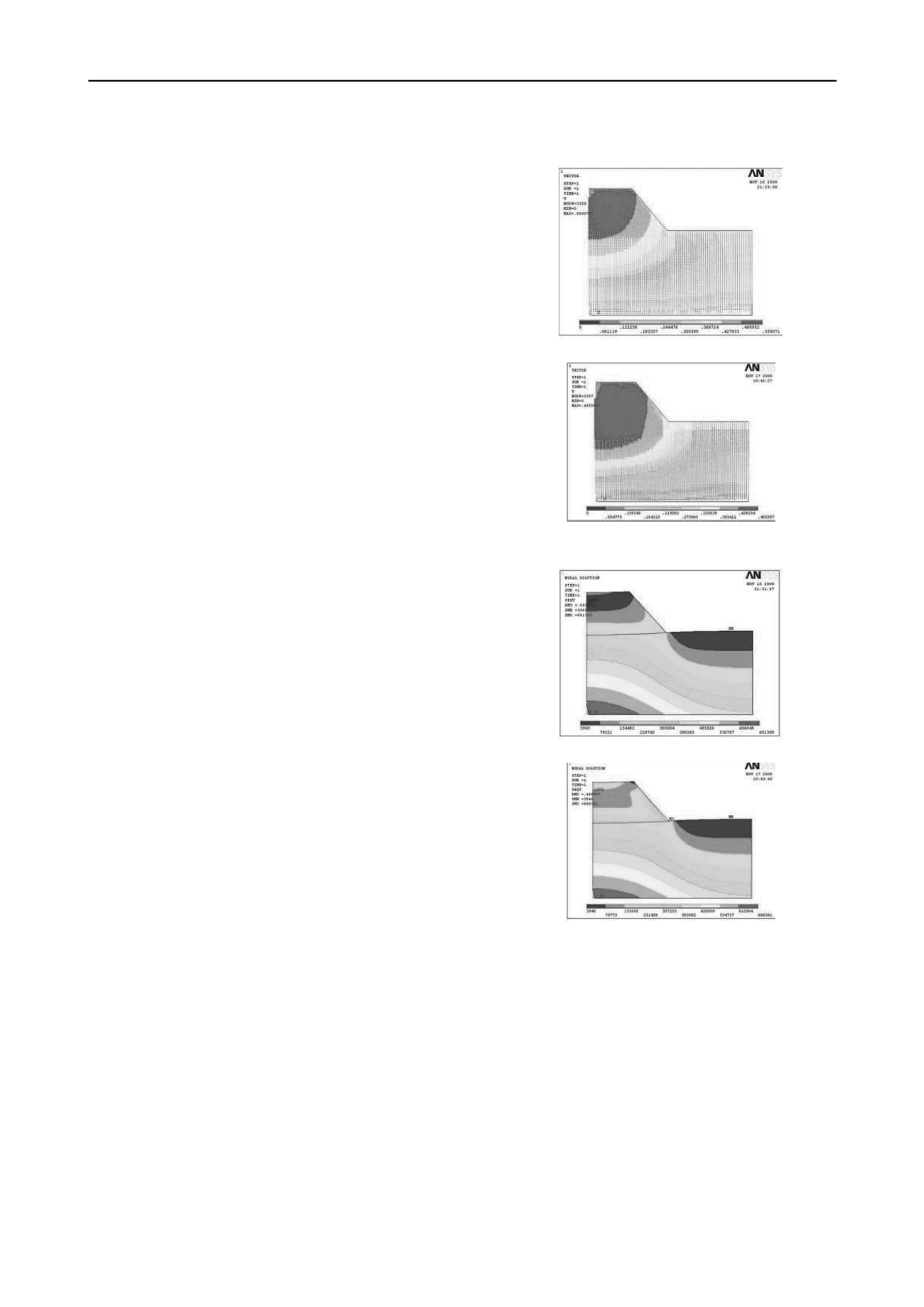
2431
Technical Committee 211 /
Comité technique 211
2.2.2
Comparison analysis of settlement
The maximum lateral displacement of unreinforced model was
72cm, which located in the distance of 8m from the toe of the
embankment. The maximum settlement was 48.6cm, which
located in the distance of 10.8m from the centerline; For
reinforced case, the maximum lateral displacement emerged in
the distance of 8.2m from the toe of the embankment with
35cm, and the maximum settlement was 41.2cm (located in the
distance of 10.4m from the centerline). It is safely to conclude
that the maximum displacement of both unreinforced and
reinforced embankment approximately close to the same point
,
whereas the maximum lateral displacement of reinforced
embankment is approximately equal to 48.6% of the maximum
lateral displacement of unreinforced embankment and the
maximum settlement of reinforced embankment is
approximately equal to 84.8% of the maximum settlement of
unreinforced embankment.
The comparison between computation analysis and centrifuge
tests of the embankment discloses that fibers help to resist the
lateral thrust and lateral deformation of the embankment
effectively. This is due to the fact that fibers unified the overall
redistribution of stress and reduced asymmetric settlement of
embankment.
3 FINITE ELEMENT MODELLING
3.1
Assumptions of computing
In the analysis presented in this paper, the unreinforced and
reinforced embankments are modeled using the Drucker-Prager
constitutive model (D-P model).
Two-dimensional plane strain models were constructed with
boundary conditions similar to those of centrifuge models. The
modeling based on follow assumptions: (1) taking geotextile
reinforced soil as homogeneously isotropic material, the
parameters obtained from triaxial tests; (2) without considering
the influence of temperature to embankment; (3) consolidation
was completed under its gravity, and without considering the
impact of pore pressure.
3.2
Parameters
Table 4. Material parameters specified for the finite element analysis
Characteristic
Unreinforced
embankment
Polypropylene-
reinforced
embankment
(19mm-0.1%)
Foundation
Density
(kg/m
3
)
2150
2180
2150
Cohesion
(kPa)
49.167
94.005
49.167
Friction
angle(degrees)
34.077
35.717
34.077
Poisson’s
ratio
0.27
0.23
0.27
Depth
of
embankment(m)
18
18
36
3.3
Displacement comparison
The computed results indicated that the values of deformation
and stress as well as its fluctuation range were marginally less
for reinforced embankment than for unreinforced embankment.
The maximum lateral displacement of unreinforced model was
79.442cm (located in the distance of 11.4m from the toe of the
embankment), and the maximum settlement was 51.498cm
(located in the centerline); The maximum lateral displacement
of reinforced model was 38.246cm (located in the distance of
11.4m from the toe of the embankment), and the maximum
settlement was 48.318cm (located in the centerline). Fig.5 and
Fig.6 present computed displacement and stress contours of the
unreinforced and reinforced models respectively.
(a) computed displacement of unreinforced model
(b) computed displacement of reinforced model
Figure 5. Computed displacement of unreinforced and reinforced model
(a) stress contours of unreinforced model
(b) stress contours of reinforced model
Figure 6. Stress contours of unreinforced and reinforced model
4 RESULTS AND COMPARISIONS
Fig.7 shows the variation of lateral displacement and vertical
displacement of unreinforced embankment from centrifuge
tests. Superimposed on the measured variation are the variations
computed by numerical modeling analysis. It can be seen from
Fig.7 that there is a close agreement between the observed and
computed displacements for centrifuge test and numerical
analysis.


